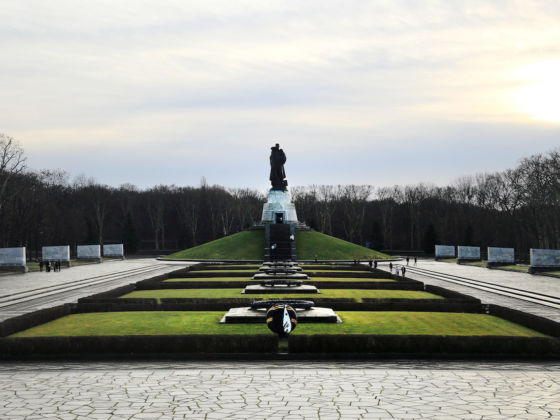The town of Gettysburg was settled in 1780, and by the start of the Civil War battle that occurred there in 1863, it contained a population of around 2,400 people. The battle changed everything. Not only was the town transformed into the symbolic marker of the turning point of the war, but it became the site of one of the greatest speeches ever given: the Gettysburg Address. When you visit today, the entire town is geared towards its Civil War history.

Gettysburg is also constrained by the limits of the battlefield that surrounds it. You can’t develop that land — it’s all historical sites. Homes in Gettysburg that are incredibly old aren’t torn down. They’re restored. The town is trapped in time because of three traumatic days 151 years ago. The whole thing’s become a war memorial.
I live in DC, about an hour-and-a-half drive from Gettysburg, and I’m surrounded by war memorials, too. They’re everywhere here. They were everywhere in my previous home of London. I saw them everywhere when I traveled Europe. They’re everywhere period. And there’s an art to visiting war memorials. These sites demand more attention than fleeting glances and awkward gestures of respect.
How to look at the memorial
You can usually tell how the war ended by looking at the memorial itself. The World War II Memorial on the National Mall in DC is covered in monolithic granite pillars with two giant arches on either side and a fountain in the middle. It’s a memorial with the pomp of a conflict won. The Vietnam War Memorial is much more somber; it almost sinks into the ground, strangely self-effacing for an object whose sole purpose is to be viewed. It’s a single hue of reflective rock with a simple list of names. There are no signs of victory here.
In Ho Chi Minh City, Vietnam, there’s a memorial museum called the War Remnants Museum. It used to be called the Museum of American War Atrocities. The message there is clear: We won, but the scars haven’t healed.
Many memorials will have lists of the war dead. If you don’t know someone on the list, try to pick a single name and comprehend that that person had a full life, family, kids maybe. Once you feel like you understand that, step back and look at the whole list.
The final exhibit at every memorial is the people visiting with you. Watch them. In DC and in Normandy, for example, you’ll often see veterans at the site. They’re the most fascinating to both watch and talk to because the memorial’s history runs parallel to their own. While you should obviously be respectful and feel out each situation, I’ve often found that vets want to talk about their experiences.
Observing the other visitors, I’m fascinated by trying to intuit how they feel about the war in question. Are they crying? Do they seem angry? Proud? Baffled?
How to feel about the memorial
In Hamlet, Hamlet says to Horatio, “There are more things on heaven and earth, Horatio, than are dreamt of in your philosophy.” Try to keep that quote in mind at the war memorial (or anywhere, really). This is a place for humility. Regardless of what your opinions are about the war — whether it was just, whether it was a tragedy, whether it was glorious — they’re allowed to be felt, but they shouldn’t be imposed on other people. Everyone is allowed to express anger or confusion or sadness or shame here. It’s not your business to judge.
War is usually depicted in reductive terms, which is moronic. War is one of the most all-encompassing, complex human phenomena there is. To convince two or more groups they need to kill each other, and then to get them to act on that conviction, takes a lot of forces working simultaneously. The force of history is behind every war, and the politics and the morality and the economics and the technology of that time all manifest themselves in the conflict.
War memorials, on the other hand, aren’t meant to be acted on in any way. They’re meant to be absorbed, then processed, then learned from. They aren’t places onto which you should project your own philosophy; instead, concentrate on allowing them to impress their message — whatever that may be — onto you.